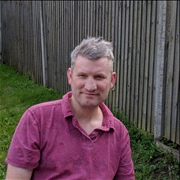Tutor HuntResources Eleven Plus Resources
Developing Creative Writing
An introduction into some techniques I use to develop creative writing for 11+ and KS2
Date : 06/08/2013
Author Information

Uploaded by : Bryan
Uploaded on : 06/08/2013
Subject : Eleven Plus
Creative writing shouldn`t wholly be about planning. Many times I have seen students try to fit their imaginations into little boxes labled "Introduction" or "Problem" or "Solution" and been amazed at the variety of story mountains or spider diagrams, flow charts and other graphic means of imposing a structure on a child`s creative writing process. Whilst there is obviously a need for such an awareness, I often feel that the imagination is left somewhat closed in.
When I teach creative writing I like the emphasis to be on the creative - the structure can come later. Writing works best when it is from experience, so I get my students to try and conjure up that experience, using their senses to describe a place, a person or an event. If you can put yourself at the centre of a piece of writing, then you are one step ahead. What can you see? What does it smell like? Is it cold? warm? dark? light? noisy? quiet? These question words (what? who? why? when? where? how?) are a useful tool in developing a creative chain of events not dependant upon a predetermined structure and as such it is more flexible.
This leaves us more able to concentrate on sentence and word level creativity. The development of the use of powerful adjectives and verbs helps create better images,which in turn develop confidence when exploring devices such as simile and metaphor towards the end of the primary curriculum. In sessions where we explore this, I find that the use of a dramatic picture - an erupting volcano, a shipwreck, a misty graveyard at full moon - to first stimulate the imagination is a useful tool as it allows the student a way in to a scenario. In developing the actual vocabulary to describe these scenarios, I find that mindmapping works well. How many different synomyms can you find for "walk" for example? They can vary from creep, tiptoe, meander, amble, shuffle, stride etc and each one subtly alters the mood of the sentence around it. When these are placed in conjunction with good combinations of adjectives then imaginative sentences can flow and a succession of colourful, engaging images can be developed.
I use these techniques to develop story introductions, where scenes need to be set and characters introduced and fleshed out. Once students have the ability to write descri ptions that firmly place a story in a surrounding that readers can see in their heads, then we can move through the desired events concentrating on doing the same things, just at a different stage in the storyline.
As a beginning into the development of Creative Writing skills, I hope you find this article helpful. There are of ourse many ways in and some will work better than others for different students. Finding the best way is half the battle and much of the reward in the vocation of tutoring.
This resource was uploaded by: Bryan
